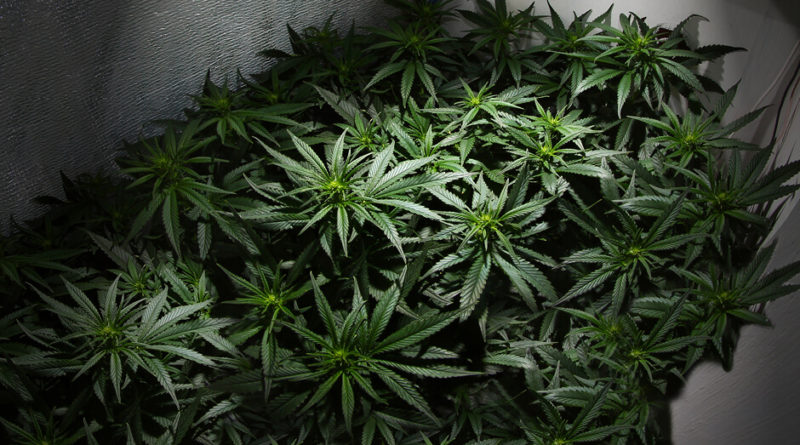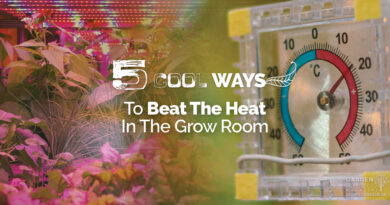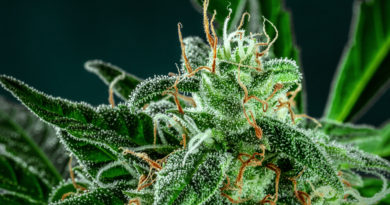How Negative Pressure in a Growroom Can Maximize Yields
|
AC Infinity is the foremost name in air delivery systems, designing and developing the latest innovations in cooling and ventilation technology. They offer a suite of quiet inline fans that automate the growing progress and track key metrics. Visit acinfinity.com or contact [email protected] to learn more.
Email NewsletterJoin thousands of other growers who are already receiving our monthly newsletter.
|
Indoor horticulture is a simple, yet complicated hobby. For the most part, the basics of outdoor growing apply to growing indoors. Light, water, nutrients, and atmospheric conditions are all major contributing factors to how well an indoor grow performs.
However, indoor horticulture is unique because it provides a heightened level of control. Still, that heightened level of control comes with additional steps that are needed to make an indoor garden live up to its potential.
The more a person grows indoors, the more he or she discovers the seemingly insignificant things that can have a dramatic impact on growth and yield. Two examples are keeping your growroom light tight and under slight negative pressure.
Slight Negative Pressure in a Growroom
Security is an important aspect of indoor horticulture that many novice growers overlook until it is too late. After all, many indoor grows contain expensive equipment and valuable crops that can attract unwanted attention.
Fertilizers and plant odor are particularly certain to grab the attention of anyone in the vicinity. Various devices can be used to eliminate or cover these odors, but a grower can still run into issues if he or she does not have a proper ventilation set-up. The first step to eliminating odor emitting from a garden is to ensure the garden space has a slight negative pressure.
 A growroom’s negative or positive pressure is determined by the ventilation system.
A growroom’s negative or positive pressure is determined by the ventilation system.
Negative Pressure vs. Positive Pressure
In most cases, an indoor grow’s negative or positive pressure is determined by the ventilation system. If the garden space is exhausting air faster than it is pulling in fresh air, the garden room will have a negative pressure.
If the grow space is bringing in air at a faster rate than it is being exhausted, the garden space will have a positive pressure. Growers who use grow tents can easily observe the difference between positive and negative pressure.
When the walls of the grow tent are bowed outward, the air is entering the tent faster than it is being exhausted (positive pressure). When the walls of the tent are drawn inward, the air is being exhausted faster than it is entering the tent (negative pressure).
As previously mentioned, the key to odor control in an indoor garden is to have a slight negative pressure. With a slight negative pressure, the air within the grow space is contained (except for the air being actively exhausted).
Read also: 10 Tips For Gardening in Grow Tents
The negative pressure will also keep all the odor contained within the grow space. This means a grower can set up a device, such as a carbon filter, to remove the odor as it purposely exits the grow space.
When positive pressure is present, the odor is not contained in the garden and can be pushed out of any crack, crevice, or pinhole before it has a chance to be treated properly. Simply put, the odor will leak from the garden.
Some growers use a carbon filter or other devices in a recirculating manner to control odor. For example, a fan combined with a carbon filter will actively recirculate and remove odor from the air within a growroom. However, even when this is implemented, a negative pressure is the only way to ensure all the odor is contained and/or treated before exiting the growing area.
Establishing Negative Pressure in the Growroom
The best way to create negative pressure in a growroom is to have an exhaust fan that is more powerful than the fan bringing fresh air into the garden. A good rule of thumb is to have an exhaust fan that is rated at least 100 cubic feet per minute (CFM) higher than the intake fan.
For example, if a grower has a 400 CFM exhaust fan, the intake fan should be no larger than 300 CFM. However, many growers find combining a large exhaust fan with a passive intake is the best way to establish and maintain a negative pressure.
When set up in this way, the exhaust fan will remove the air from the garden space and then draw air in through a passive (non-powered) intake port.
Read also: How to Deal with Humidity in the Growroom
A sealed growroom with CO2 enrichment and an air conditioner as a cooling device will be the only exception to the negative pressure requirement. In theory, this type of growroom never exhausts anything (the air is always contained within the room), so the odor can be treated in the grow space with a recirculating system.
Although sealed growrooms are increasing in popularity, it requires a careful balance of CO2 enrichment and temperature/humidity control.
 A tell-tale sign of an indoor grow’s location is the distinct glow of horticultural lighting.
A tell-tale sign of an indoor grow’s location is the distinct glow of horticultural lighting.
Light Tight Growrooms
One of the most overlooked and important factors of having a successful indoor garden is control over the photoperiod and darkness. Why is controlling the darkness so important? For most photosensitive plants, the flowering response is actually triggered by the amount of darkness the plant receives in a 24-hour period.
In other words, some plants will not produce fruits and/or flowers until they receive a certain amount of darkness per day. Indoor horticulturists will generally utilize a 12-hour lights on and 12-hour lights off cycle for the fruiting and flowering stage as 12 hours of darkness is enough to trigger flowering in photosensitive plants and to maintain healthy fruiting and/or flowering development.
However, many growers often underestimate how dark the dark cycle should be. A dark cycle needs to be pitch black. Yes, it is true that moonlight is present in nature. However, reflected light from the moon has travelled such a long distance that its intensity is minimal when compared to the sun. In an indoor garden, all light sources are located close enough to the plants to create problems.
Read also: 7 Practical Heating Solutions for Your Indoor Grow
Any light entering the flowering stage during the dark cycle could potentially cause the plants to continue vegetative growth or, for dioecious plants, cause hermaphrodites to develop.
In some cases, a light leak will not cause a noticeable problem, but it will affect yield by causing the plants to grow a little spindly as they attempt to convert from vegetative growth to flowering growth time and time again.
Eliminating light leaks is also a security measure for indoor horticulturists. Wherever exterior light can come into a growroom, light can escape back out. Aside from odor, a big tell-tale sign of an indoor grow’s location is the distinct glow of horticultural lighting.
Light Tight with Air-Cooled Reflectors
Creating a light tight environment for a typical growroom is not all that difficult. However, when using air-cooled reflectors, getting the dark cycle to be completely pitch black is often a difficult task.
Air-cooled reflectors generally draw air in from outside the garden space. When light from that outside source travels through the ducting, it reaches the reflectors and, you guessed it, gets reflected into the garden space.
There are a few different ways a grower can tackle this problem. One option is to bend the ducting so that it creates an “s” shape. This is effective because light can reflect, but it cannot bend. Another option is to draw fresh air from another room instead of from directly outside.
This way the second room can be kept dark, meaning no light could enter the ducting. Regardless of the technique used, it is imperative that growers with air-cooled reflectors address the potential for light leaks.
Serious indoor horticulturists are not just trying to make a garden operational, they are trying to produce optimal conditions so their grow operates to its full potential. Plants will still produce fruit and/or flowers if there are small light leaks, but yields and quality could greatly increase if those gardens had a pitch black dark cycle.
Experienced indoor growers also understand the importance of keeping their grow facilities secure and that the number one way to keep a grow space secure is to make sure no one knows about it.
In other words, keep odor and horticultural lighting hidden from the outside world. Creating a negative pressure for proper odor control and having a light tight garden space are two great ways to make certain a grower’s indoor grow is kept out of the public eye and nose.
Read next: How To Perfect Your Grow Room’s Ventilation System





